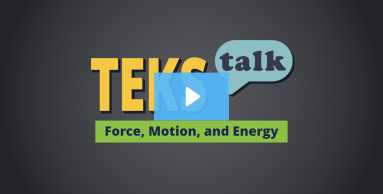
Knowledge and Skills Statement
Research
Van Hook, Stephen J., and Tracy L. Huziak-Clark. “Lift, Squeeze, Stretch, and Twist: Research-based Inquiry Physics Experiences (RIPE) of Energy for Kindergartners.” Journal of Elementary Science Education 20, no. 3 (2008): 1–16. https://doi.org/10.1007/bf03174705.
Summary: There are several common misconceptions in young children's ideas about energy, which can lead to the misunderstanding of more complex energy concepts at upper-grade levels. It describes a study conducted in Kindergarten classes where students use hands-on activities to observe and describe how energy is used. In simple terms, students were eventually able to articulate that energy can be shifted to another object by lifting, squeezing, stretching, or twisting that object. Students also described some energy sources for humans and animals and how they use them.
